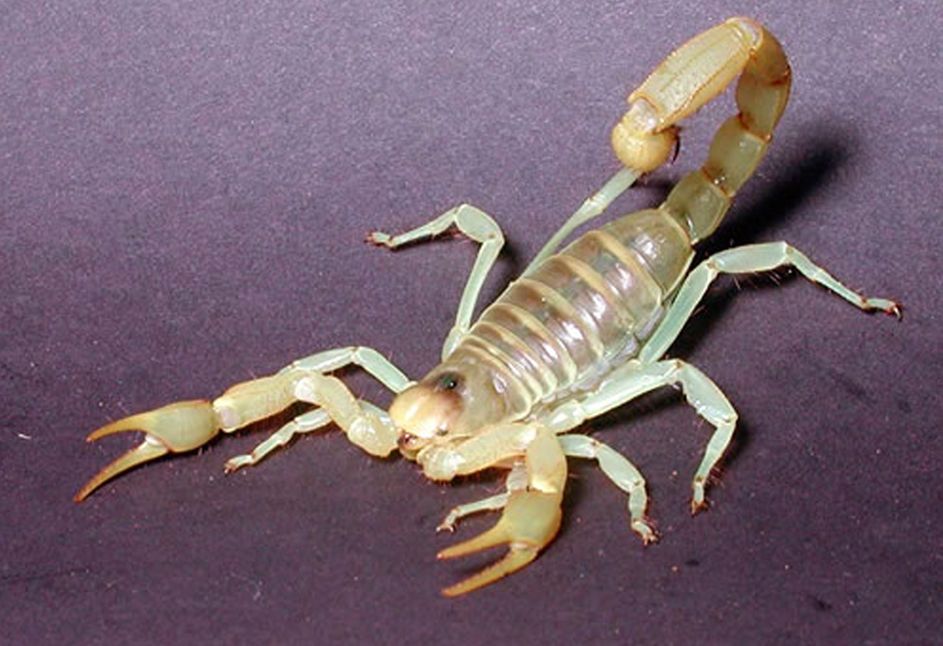People often are fascinated by what appear to be albino or all white animals. In some cases true albinism exists, but with arthropods most people often are referring to freshly molted individuals. In order to grow, arthropods, including scorpions, must shed their skin. The underlying skin usually is white and soft but will darken as it hardens. There are many cases where “albino” arthropods have been collected by novices and shortly afterward the animal turns the typical adult color.
The molting process and period following it are precarious times for scorpions and other arthropods. There are many opportunities for molting to have complications such as an appendage becoming stuck in the old skin and the scorpion being unable to free itself. Immediately after the molt, the scorpion’s body is very soft, and they are not able to defend themselves. Predators would be able to make an easy meal of a freshly molted scorpion.

How poisonous is a white scorpion?.
White scorpion (Hottentotta tamulus) stings are an emerging health hazard in northern Sri Lanka and are increasingly recognized particularly during the last decade. The stings are usually harmless; however, fatal cardiovascular sequelae ensues following severe envenomation. It is often difficult to identify this miniature creature and its site of sting due to its nature of habitat and nonspecific local symptoms that develop after the sting. Here, we report a patient who had developed a blistering skin lesion soon after the sting which is not reported in the literature to date by the sting of this particular species. Recognizing it would help the clinicians of this subcontinent to consider scorpion sting as a differential diagnosis for the above presentation in the future.
Can scorpions be albino?
Albinism is an extreme form of color pattern morph where color pigments are absent, but this is almost non-existent in scorpions (only reported in one species).






